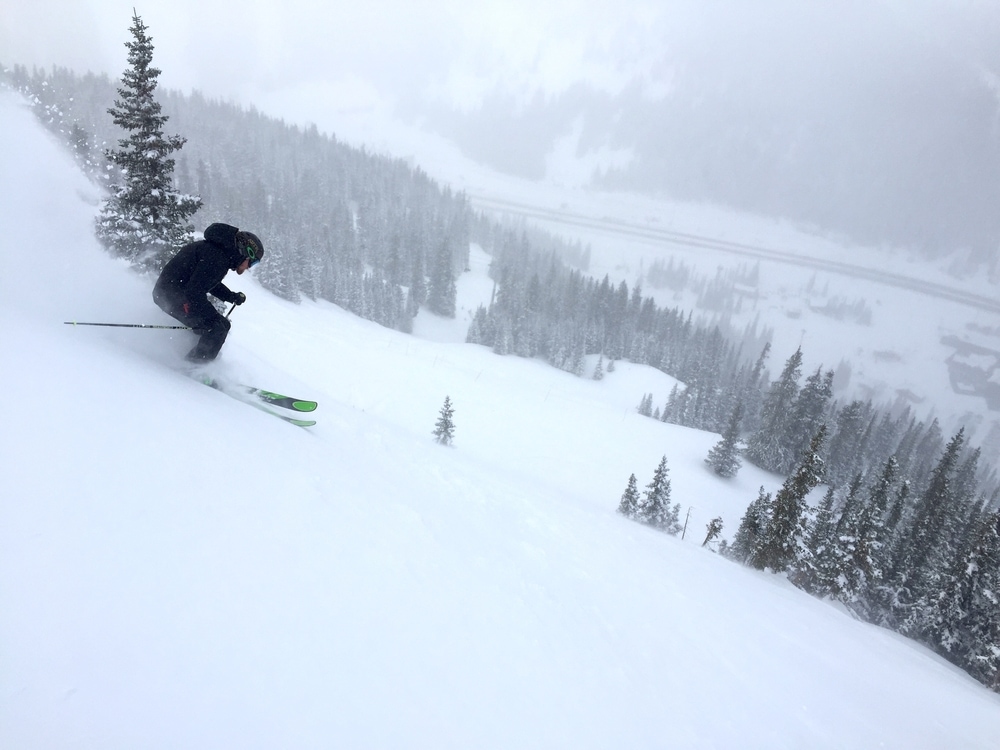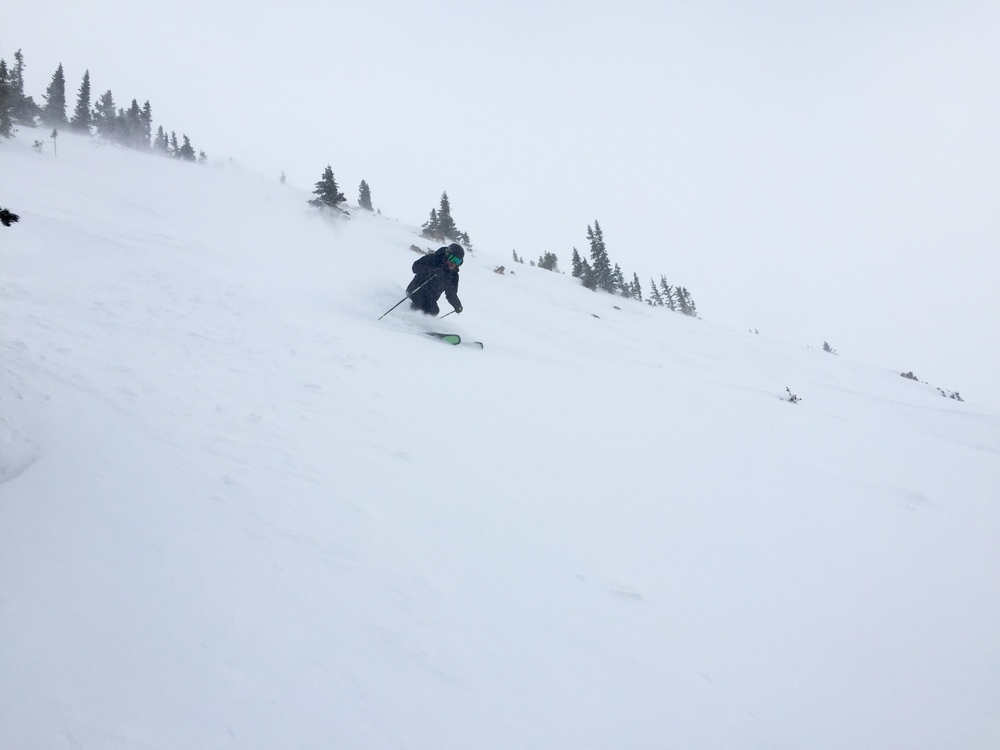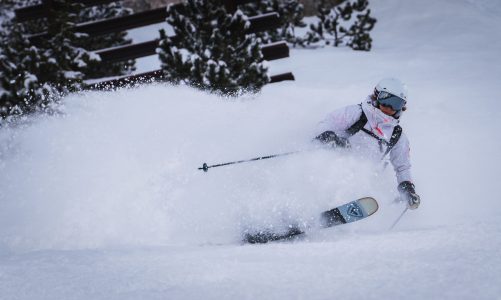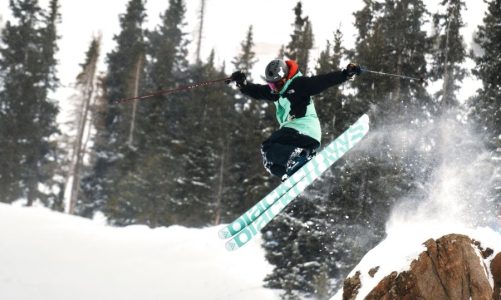The Kastle FX96 HP and FX106 HP mark an overhaul of the brand’s freeride lineup. Game on.
Kastle is usually known for making modest changes to their skis—and only doing it every couple years at that. So while we knew changes were coming for the FX and BMX lines, we were surprised to see rebuilt models greeting us at Outdoor Retailer. In short: the BMX line is gone for 2020, swallowed up by the FX (“free cross”) series. The new family includes the Kastle FX96 HP and FX106 HP, along with the non-HP FX86 and FX116. Metal is gone from the HP models, replaced by carbon, among other changes.
We love the FX series. So we were excited to put the new models through their paces.
Sticking with tradition? Get a pair of 2019 FXs before they’re gone!
Field Notes
When we first saw the new FXs at Outdoor Retailer, we were a) psyched to try them and impressed with the sleek look and b) apprehensive. “High Performance” Kastle skis without metal? Seems strange. And we weren’t the only ones. This spring, we’ve already been receiving call after call from customers who want to know one thing: Did Kastle screw up the FX?
Staffers JP and Matty set out to answer this question over a few storm days at Colorado’s Loveland Ski Area. Mid-April snow pounded the high country, quickly covering a freeze-refreeze cycle crust with light, blower goods. The changing conditions gave the team a great test environment, especially for skis that are supposed to be strong but also excellent in soft snow.
Groomers
The now-outdated Kastle FX95 HP is one of the most revered skis in the history of Powder7. One reason why? Because it’s an all-mountain ski that absolutely crushes groomers with a bomber yet smooth and energetic feel.
Without metal, the replacement, the FX96 HP, feels lighter on snow. But in our testing, we didn’t notice a compromise. The updated inserts at the tips, “Hollowtech 3.0”, do a nice job of dampening the ride up front while keeping the swingweight down. The skis snap in and out of carved turns with ease and plenty of energy, and when you hit 88 miles per hour, the DeLorean’s still got plenty of power and stability to kick things back to 1955. This power and dampness through the tips also helps the FX106 HP outpace the ski it replaces: the BMX105 HP.
From Matty: “The 96 rages like the last version did.”
From JP: “Man, there’s not much difference [between the new version and the old version]. But the 106 is a pretty big improvement over the BMX.”

Bumps and Trees
With a slightly more svelte waist width at 96mm, the FX96 HP profiles as the better mogul ski of the two (the narrowest FX at 86 is probably the best in the line, however it’s less versatile for mixed snow and powder). All the updates to the skis point to improved mogul performance for most skiers. Matty and JP raved after charging the bump runs under Loveland’s famed Chet’s Dream (formerly Chair 1) lift.
The carbon backbone in the FX96 HP and 106 HP give them power and stability maneuvering through moguls at all speeds. By shedding the metal, they have become even quicker and more precise than previous iterations—and easier on the legs. The team said the skis absolutely shined in dust-on-crust conditions with pockets of blower powder.
From JP: “I grew up skiing this terrain. Dang that was fun! I might have to have a pair of these.”
From Matty: “They do whatever you want them to. Most skiers will absolutely be better at moguls with these skis.”
Powder and Mixed Snow
With each update, the FXs have gotten more fun—a.k.a., better at skiing the snow we all hope to be skiing. The new version continues this trend. The lightweight and tapered tips track straight and smooth through soft snow, and they stay on top of heavier powder better than the metal versions did. In fact, with the latest update, Kastle doesn’t hide their intent: the FXs are aimed at soft-snow skiing and freeride skiers, while the MXs fill the needs of hard-snow skiers. On that front, they pass with flying colors, especially the FX106 HP, which is an exceptionally versatile all-mountain powder ski. In fact, we would argue that the FXs are still better than average in the wider all-mountain category when it comes to hard snow performance.
In variable snow conditions, especially heavier and/or chopped up powder, refrozen crud, and crusts, the FX96 HP and FX106 HP pull their weight. No doubt. However, by losing the metal, the skis may have lost some of their bomberness in all snow types. This is somewhat projection: Matty and JP profile as smaller/lighter skiers, so they didn’t report having much trouble in variable snow. But bigger, aggressive skiers may note this loss of power.

Downside
Matty and JP agreed after their test. There are probably just two types of skiers who may not love Kastle’s updates to the FX line: longtime Kastle fans who point-blank believe there should be metal in these skis; and skiers who prefer bulkier, unapologetic skis and don’t like when brands sub carbon in to take metal out.
Bottom Line
Kastle found a way to shed some mass (and some cost) from the FX lineup without diluting the skis into a shadow of their former selves. When it comes to skis that balance accessibility with high-level performance, the Kastle FX96 HP and FX106 HP sit toward the top of the 2020 ski hierarchy.
Our verdict: All systems are ‘go’ with the new FXs. As JP said: “Kastles just have that special sauce.”
Check all the updates in the 2020 Kastle ski lineup.


